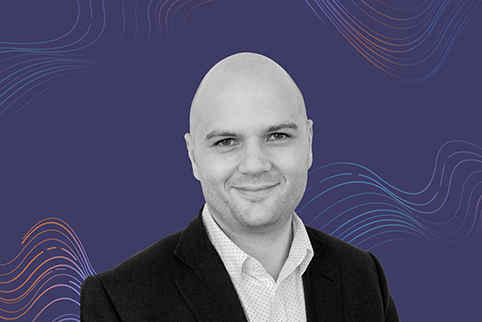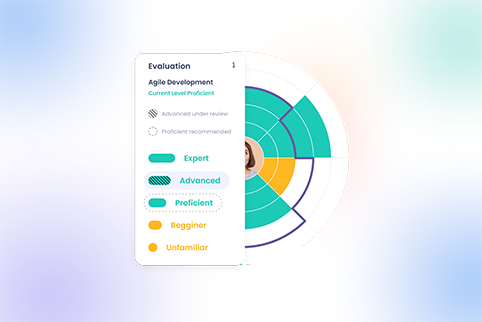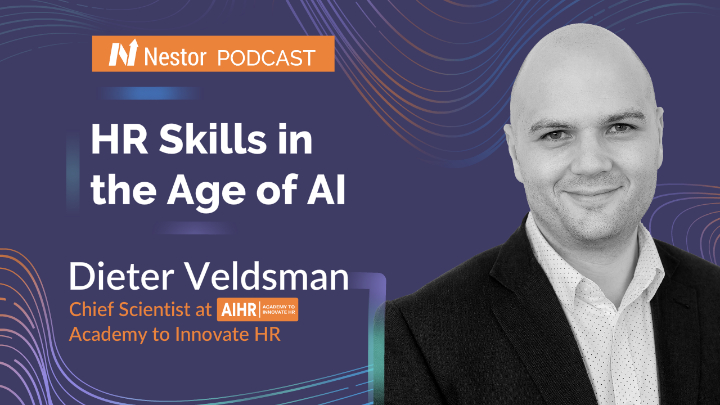Leadership expert, keynote speaker, and consultant, Julie Jungalwala, joined us for a conversation about the importance of reinventing ourselves in an ever-evolving world of work through the power of lifelong learning and new development trends. She also touched upon the role and influence of leaders and organizations in the continuous growth of their employees.
Julie is president and co-founder of leadership training enterprise, Academic Leadership Group, and an instructor at Harvard Extension School, where she teaches strengths-based development and authentic leadership.
Julie founded the Institute for the Future of Learning and is an advisor to entrepreneurial students at Harvard’s Innovation Lab. Her leadership experience and commitment to fostering growth also gave birth to a book: “The Human Side of Changing Education“. You can connect with Julie on LinkedIn.
Raluca Apostol is the Chief Product Officer at Nestor and you can connect with her on LinkedIn or Twitter @RaluApostol.
You are a strong promoter of the need to support and enable continuous reinvention. Why do we need to reinvest ourselves?
Julie Jungalwala: So, we’re defining reinvention as a transformative journey where you dare to breathe new life into your hopes and dreams. We all have them as children and some of us are fortunate enough to have those nurtured and we continue to grow and excel and flourish in our chosen areas.
Many of us do not. Many of us learn through an education system, for example, that our skills don’t fit into a neat box of academic performance. So, many of us find ourselves as adults thrown out into the real world. And as adults, we are continually learning and growing.
And the research tells us that we go through stages of development as adults. I recently heard the phrase, ‘your first adulthood’ and then ‘your second adulthood’. So, your 20s-30s, and then shifting in your 40s-50s. And again, we’re all working this out in first principles.
As human beings, we have an evolutionary impulse, which is to learn and to grow. And what if our organizations were incubators of that learning and growth?
— Julie Jungalwala

What skills do we need most to succeed in an AI-driven world? Is it soft skills or digital skills? Which ones will make the difference?
Julie Jungalwala: I think it’s all of the above. So, it’s not either digital or soft skills, it’s both. And I read this, at times alarming, but very incisive comment — I think it was an IBM business report —where they said that “AI won’t replace people, but people who can use AI will replace people who don’t.” So, keeping yourself current with how AI, for example, machine learning will impact your job — and it will impact the majority of jobs — is important.
The phrase is interesting because ‘soft skills’ sounds kind of optional, but it’s really all about emotional intelligence.
The most critical skills, in my experience are how you navigate yourself, work with other people, collaborate, get things done. Those will always be critical.
— Julie Jungalwala

But it was interesting. It was a conversation around upskilling and reskilling during the reinvention project that my business partner, Jenny and I, are working on, where that idea sparked. So, we were in a conversation one afternoon and we broke out in heated agreement that we were reading all of these reports about upskilling and reskilling and deskilling. And we said, nowhere here is there any conversation about the messy process of human change.
If you’re asking somebody to learn a fundamentally new skill if you’re asking them to potentially change the occupational category, which many people will do over the course of their career, that’s a change in professional identity. That is letting go of something that you know how to do and do well, and maybe have a sense of mastery with to being a beginner again, and the human brain is not wired to see that as a safe and predictable thing to do and will, in many cases, actively reject it.
So, Jenny and I were intrigued and said, well, what if we were to interview people who have successfully reinvented themselves? What could we learn from them? So, we interviewed over 50 people, and we were digging into these interviews, distilling the data to find out:
- Are there predictable phases? If so, what are they?
- Is there a framework here that might be helpful, a guide, if you will?
- Are there skills, are there reinvention skills that we could identify?
- And with all of that, how might that help organizations help their people learn and grow?
What is the role of human-centric leadership in driving human reinvention and supporting people’s growth?
Julie Jungalwala: I think leaders have a critical role to play. I teach a program called Authentic Leadership, and I oftentimes invite those leaders to be the lead learners within their organization and to make their own growth explicit. So, where is your developmental edge? What are you working on? And can you make that transparent to the organization? Because that sends a really strong message.
There’s a lot of conversation about learning cultures, but the reality is many, many organizations are knowing cultures. So, the leaders taking the first step, showing that little bit of vulnerability, is key. A great example of this, I read some years ago, a CEO took over what was essentially a pretty toxic organization, the culture was known as being toxic.
And after his first year on the job, he asked a consultant to conduct a 360 on his performance. And that happens all the time, as you know, in organizations, 360s. But what was different with this CEO was he published the results on the company intranet:
“Here’s what I learned. This is what I’m working on. And I will check back in with you in six months to see how I’m doing.”
I mean, I’m getting… goosebumps. It’s simple and it’s so powerful.
What would be the capabilities or strengths that an authentic leader should have to be a real leader for their people and positively influence them?
Julie Jungalwala: The authentic leaders with whom I’ve worked, it’s really palpable that they have a strong set of values that they live by. There is like a groundedness when you’re in conversation with them, they are living their values, and that in itself is, is inspirational.
They also have gone through usually some tough times and have extracted lessons from it. So, they take a lot of self-responsibility. Instead of viewing something as having happened to them, they have the frame of: “If this happened to me, what’s the lesson?”
In the Authentic Leadership Workshop that I run, I do this activity called a life map, where I ask leaders to map their peaks and valleys in their lives so far. Don’t overthink it, you know, quick three minutes, do a sketch. And the debrief is fascinating. Oftentimes what comes up is people say:
“I learned the most in the valleys. I learned the most during the dark times.”
Bill George from Harvard Business School will call this your crucible moments. This is when you really learn. You learn whatever the lesson is to be learned. And, oftentimes, the next stage of your leadership or maybe the next stage of your life. Because what folks additionally say is there is oftentimes a pattern, not always, but often:
“The next peak was as a direct result of the choices that I made in those valleys. So, I learned this incredible lesson here, or I experienced this incredible loss, transition, reinvention, whatever it was, and now this is possible, something I could never have imagined.”
The other side of that is if you haven’t learned the lesson, you might find that valley repeating itself several times until the lesson is learned.
The lack of development and growth opportunities is one of the main reasons people quit their jobs. How can leaders contribute to helping people grow inside the company and cultivate the necessary skills to thrive?
Julie Jungalwala: Yes, I’ve got a very practical answer to that. I would love all managers to have a very quick and easy little spreadsheet or something on a yellow pad. If you were to list all of the names of the people who report to you on the left-hand side of that page and then have a number of columns:
- short-term career goals
- medium
- long-term
- strengths
- growth areas
And if you were just to be able to complete that, that would give you the map to help your people grow.
When I ask folks in workshops to do it, 9 times out of 10, the majority of folks say: “I could complete that for maybe one or two people, but I don’t know the bulk of my team, I don’t know.” So, it would be wonderful, to see this world where every manager knows that this particular employee – these are their large, short, medium, and long-term career goals. This is how this job fits into this. This is where they want to go next. And this is how we’re helping them build the skills to get there.
So, at the end of every year, employees can say: “I am more employable at the end of the year than I was at the start of the year? Or I continue to be as employable at the end of the year as I was at the start of the year?”
If somebody has five years of experience in a role, a question to follow up with is: Is it one year experience five times or did you continually learn and grow during those five years? There's a quality of difference.
— Julie Jungalwala

Many organizations already face a severe shortage of key talent and significant skills gaps. How critical do upskilling and reskilling have become? Where should we start from?
Julie Jungalwala: An organizational strategy will help them start to get a sense of what the skills might be. And looking outside of the organization and getting a sense of:
- Where is the industry headed?
- What are the major forces at play here?
- And what are the skills that we need to help employees develop?
And you probably know better than anybody what really good options are. Do we build in-house? Do we hire externally? Do we maybe do more of gig workers?
Another option that I don’t hear a lot about, which I think is very powerful, is thinking of your vendors, your suppliers as potential partners and talent. So, are there options to have a more flexible, agile workforce across your supplier base, your vendor base, and maybe even your customer base? What might that look like?
Growing up in the UK, there was this concept of a ‘secondment’ where you would leave your organization and go work somewhere else for a year and then come back. And that was very generative because you’re bringing back different insights, new skills oftentimes, new perspectives, a new network of people that you can lean on and help you within the organization.
So, the combination of build internally, hire from the outside, supplement as needed, and then thinking more flexibly about all of your partners, vendors, suppliers, customers and what might be possible — this talent ecosystem, if you will.
Your journey includes so many inspiring experiences, some of them connected to the education field. From these perspectives, how has the role of learning evolved in the last period? Do you believe that experiential learning will replace formal education?
Julie Jungalwala: I think it’s an incredibly exciting time to be in learning and development. It feels like, and I’m not sure if COVID was part of this or just the technology is taking us to this place, but I think the tolerance for the 45-minute lecture is pretty low, given just how immersive the learning experience can be through different technologies.
I’ve always been a big fan of experiential learning. I remember this as a college graduate, sitting in my first workshop. And there was this wonderful woman, Alison, who was teaching a team-building workshop. And it was all experiential. And up until that point, I’d really only been familiar with more of the lecture-based approach. And it kind of blew my mind. I thought, on the one hand:
“This is wonderful! And I’m getting I’m learning so much more.” On the other hand, I had no idea this job existed. “Could I do that job? That looks interesting. How do you get to do that? How do you learn the skills that she clearly has?”
So, I see things shifting more to the experiential side of things, content being much more bite-sized and as needed. Within the K-12 space, there’s a lot of really great work happening with project-based learning. Schools such as the UTech Network, just high-tech high, wonderful innovations happening there around transdisciplinary project-based learning.
That’s a fundamental shift from lecture. It requires a complete restructuring of the administrative support that goes along with that, the teacher skill set, how we think about curriculum and pedagogy. But that’s already happening there. And I think that’s going to have an impact on higher education and beyond.
And there is this other little piece that I would love to see more of. I know it’s in its early stages, but years ago I used to teach conflict management and difficult conversations. We would do role plays and role plays are helpful and they also feel a bit clunky at the same time.
I think there’s an incredible opportunity with virtual reality (VR) to build skills in areas where we feel vulnerable and where technology can be an incredible support to build skills until we have greater comfort and facility with the skill that we’re learning. So that when we’re in ‘real life’, we feel more comfortable, more at ease, and more capable.







